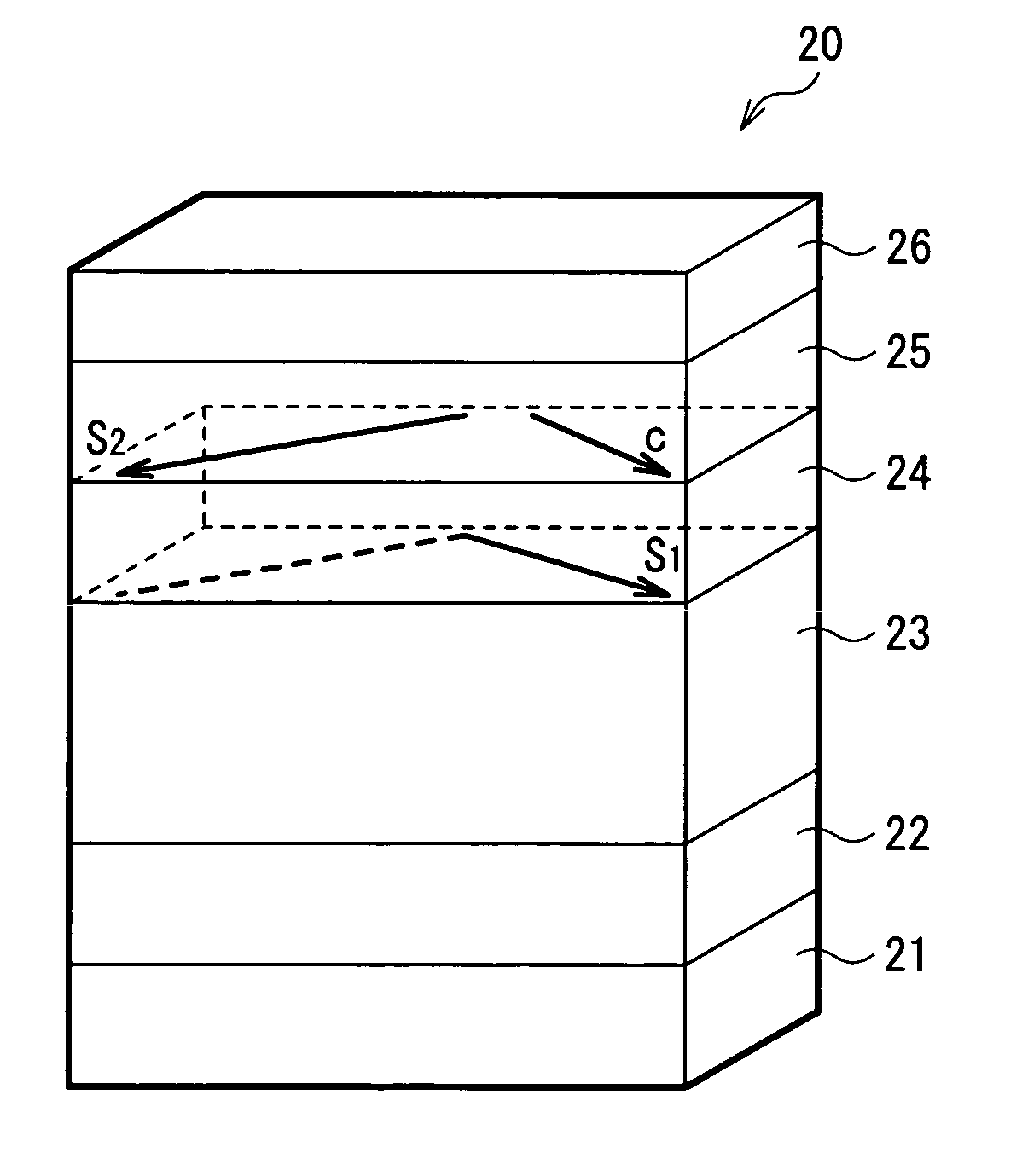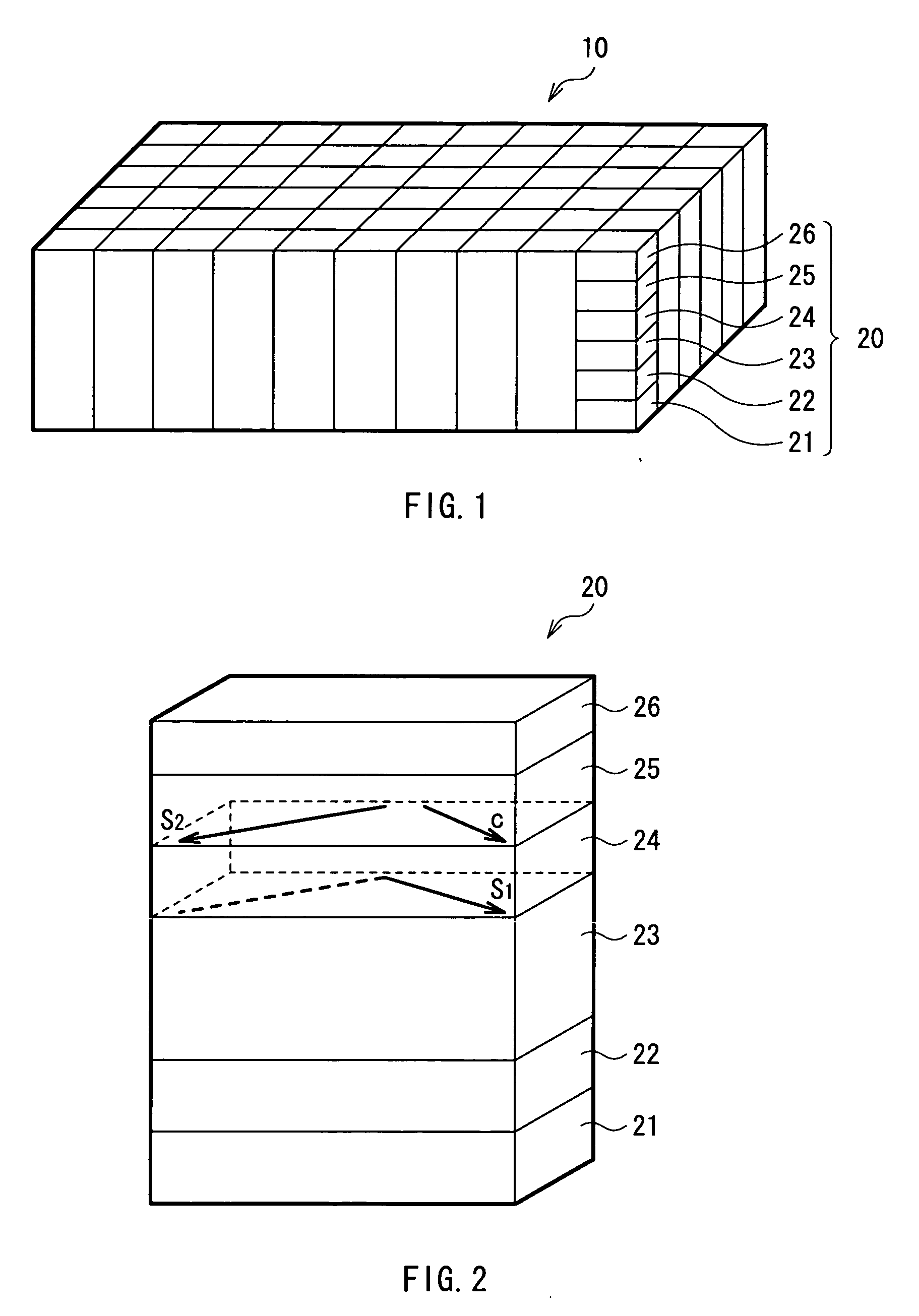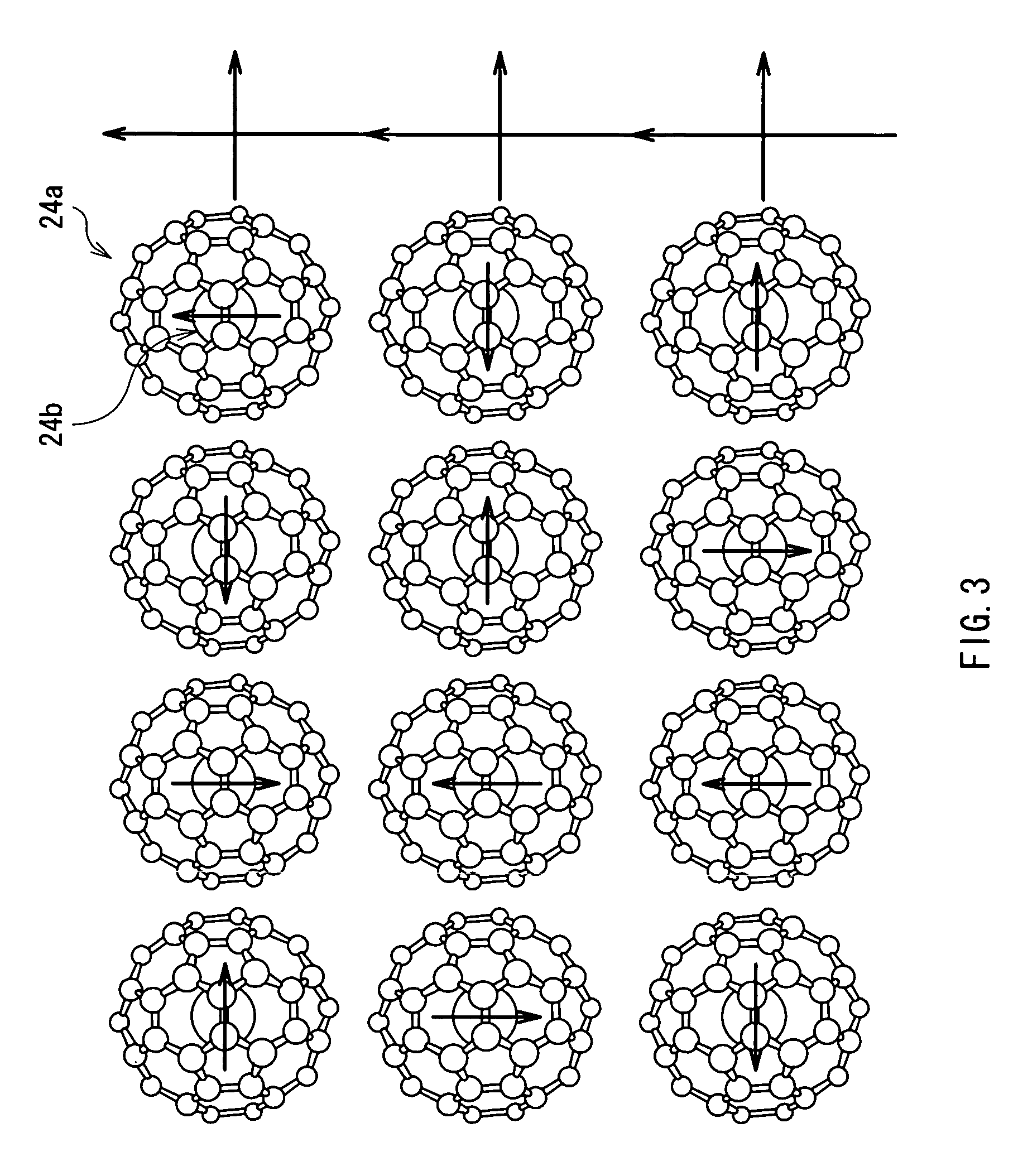Memory element and memory device
a memory element and memory technology, applied in thermoelectric devices, instruments, nanoinformatics, etc., can solve the problems of cross-talk, large consumption power, and left-over memory high density,
- Summary
- Abstract
- Description
- Claims
- Application Information
AI Technical Summary
Problems solved by technology
Method used
Image
Examples
first embodiment
[0038]FIG. 1 shows a construction of a memory element according to a first embodiment of the invention. The memory element MM1 is a “spin injection type” element for performing writing by causing magnetization inversion by injecting polarized spin electrons. FIG. 2 shows a taken out memory cell 20 constructing the memory element MM1.
[0039] The memory element MM1 is a memory element wherein a plurality of memory cells 20 are arrayed in a state of a matrix (for example, array of M columns and N lines: M×N array). Recording information of the memory cell 20 is written by injecting a spin-polarized electron flow into each memory cell 20 (spin injection method). It is preferable that an in-plane size of this memory cell 20 is from 0.5 nm2 to 5 μm2. When the size of the memory cell is small, cross talk may be caused. It becomes possible to inhibit influence of a magnetic field due to a writing current to the adjacent respective memory cells 20 each other by setting to the foregoing size....
example
[0093] In this example, a nonvolatile RAM having the following construction was fabricated. Here, constructions from the electrode layer 26 to the substrate 21 will be shown.
[0094]
[0095] Electrode layer: Au film (25 nm thick)
[0096] Ferromagnetic free layer: permalloy film made of Ni81Fe19 (1 nm thick, and having uniaxial anisotropy so that the c axis becomes parallel to magnetization of the ferromagnetic fixed layer)
[0097] Paramagnetic layer: La@C82 thin film (20 nm thick)
[0098] Ferromagnetic fixed layer: permalloy film made of Ni81Fe19 (4 nm thick, and having uniaxial anisotropy)
[0099] Electrode layer: Au film (500 nm thick)
[0100] Substrate: silicon substrate
[0101] Measurement results of the sample structure of this example will be hereinafter shown.
[0102]
[0103] Polarization efficiency: to 90%
[0104] In-plane effective anisotropy magnetic field for ferromagnetic free layer: Hu=+2Ku / Ms to 10 Oe
[0105] Spin number density: to 1.9×1015 cm2
[0106] Gilbert attenuation coefficien...
second embodiment
[0147]FIG. 19 shows a construction of a memory element according to a second embodiment of the invention. This memory element MM2 is also “spin injection type” wherein writing is performed by generating magnetization inversion by injecting polarized spin electrons. A basic structure thereof is that a spin conduction layer 3 is provided between two ferromagnetic layers, that is, a fixed layer 1 wherein its magnetization orientation is fixed to a certain direction, and a free layer 2 wherein its magnetization orientation is changed by injecting the polarized spin electrons.
[0148] These respective layers are formed in layers inside a carbon nanotube 10 of one molecule. That is, the carbon nanotube 10 constructs one composition unit of a memory by setting a central part in the axis direction to the spin conduction layer 3, and including the fixed layer 1 and the free layer 2 in the both ends thereof Further, the fixed layer 1 and the free layer 2 are provided with electrode layers 4A a...
PUM
 Login to View More
Login to View More Abstract
Description
Claims
Application Information
 Login to View More
Login to View More - R&D
- Intellectual Property
- Life Sciences
- Materials
- Tech Scout
- Unparalleled Data Quality
- Higher Quality Content
- 60% Fewer Hallucinations
Browse by: Latest US Patents, China's latest patents, Technical Efficacy Thesaurus, Application Domain, Technology Topic, Popular Technical Reports.
© 2025 PatSnap. All rights reserved.Legal|Privacy policy|Modern Slavery Act Transparency Statement|Sitemap|About US| Contact US: help@patsnap.com



